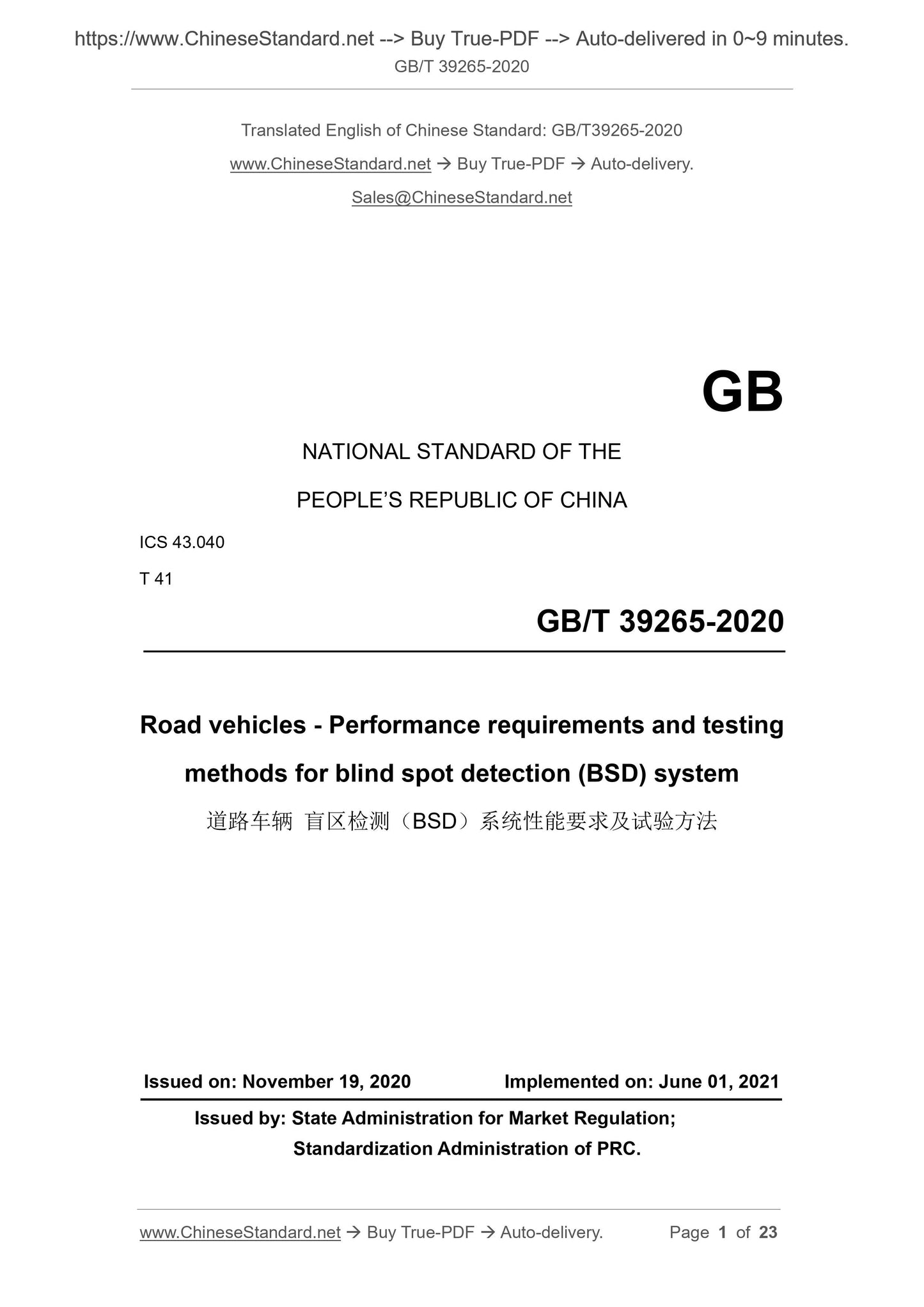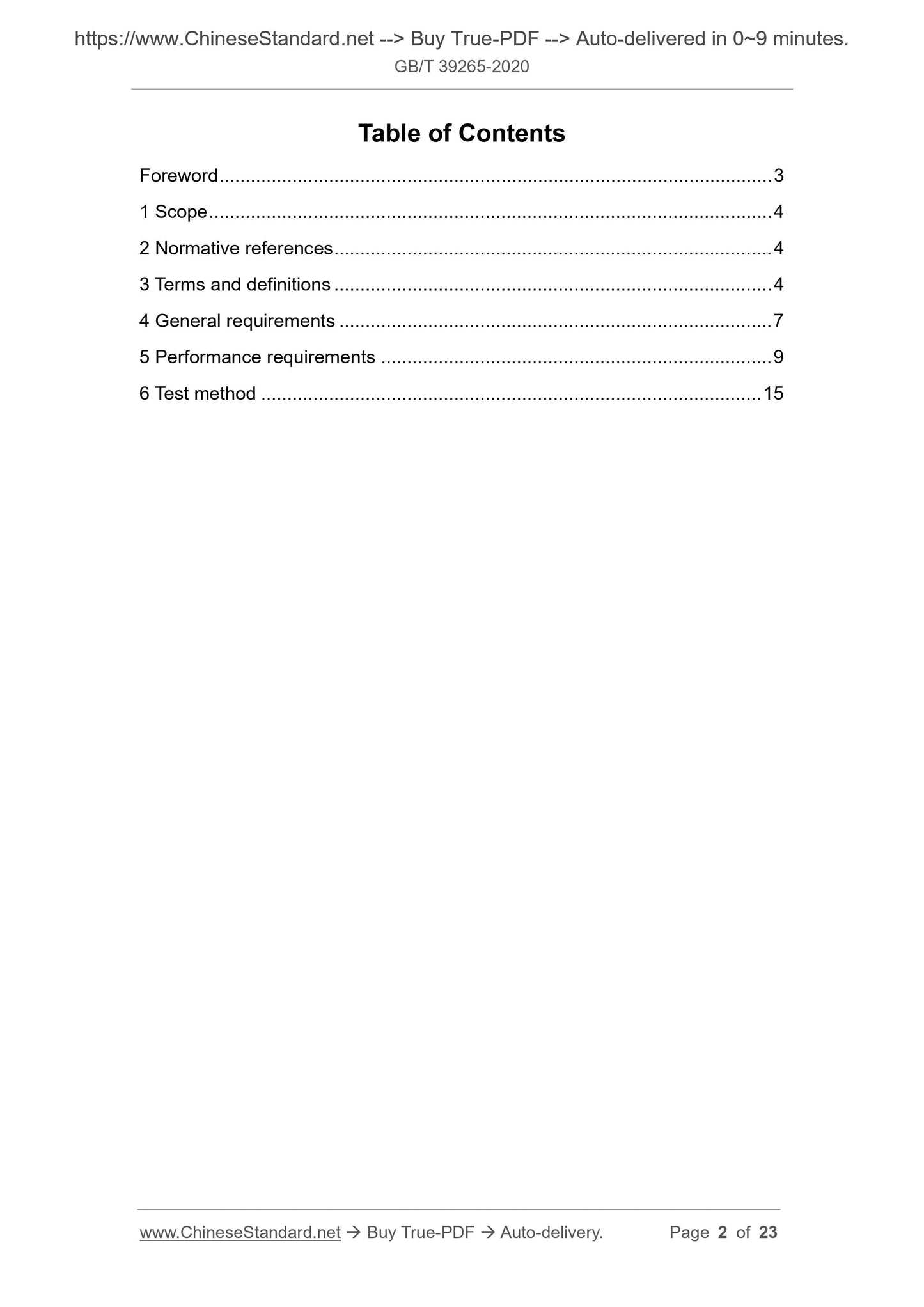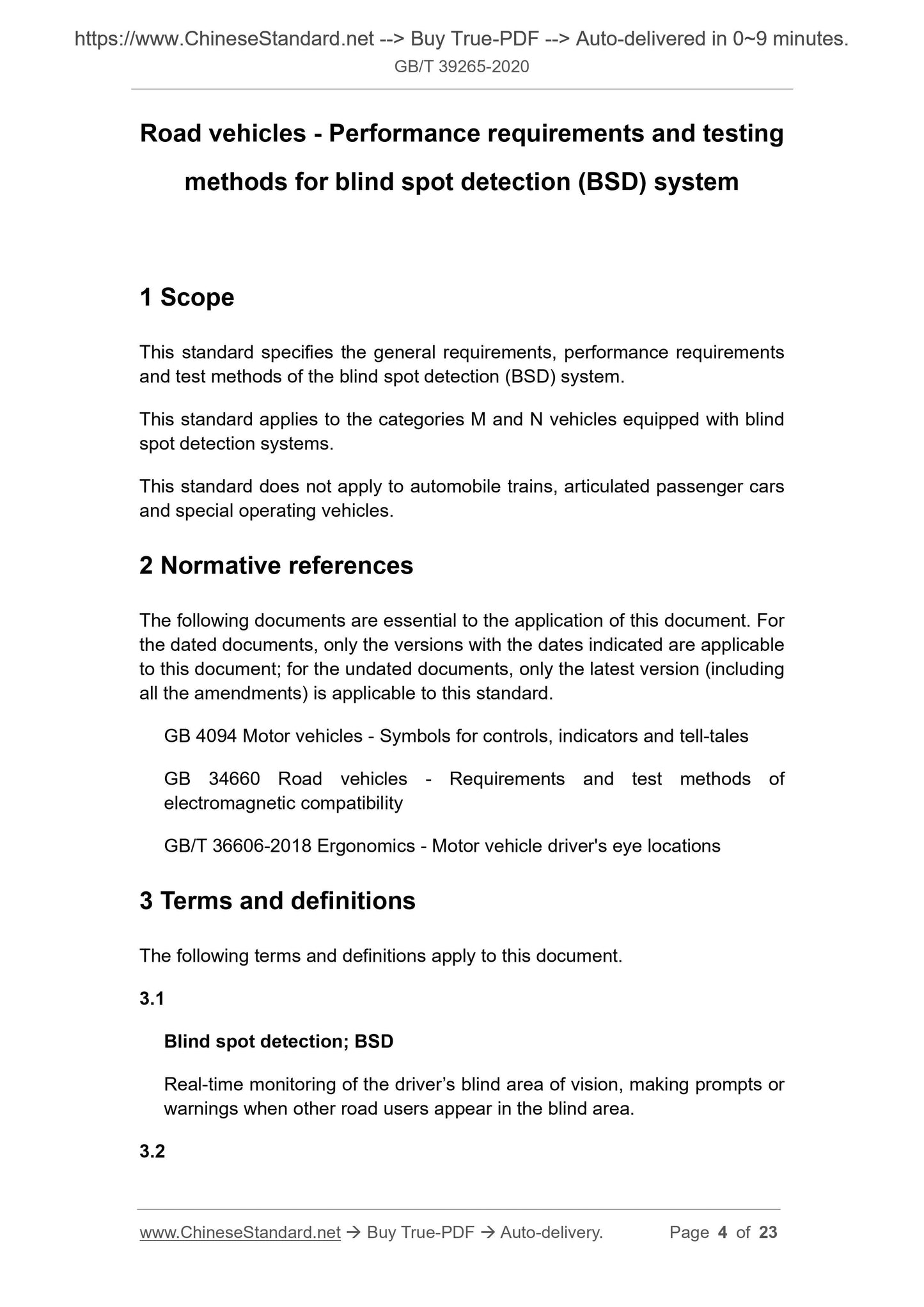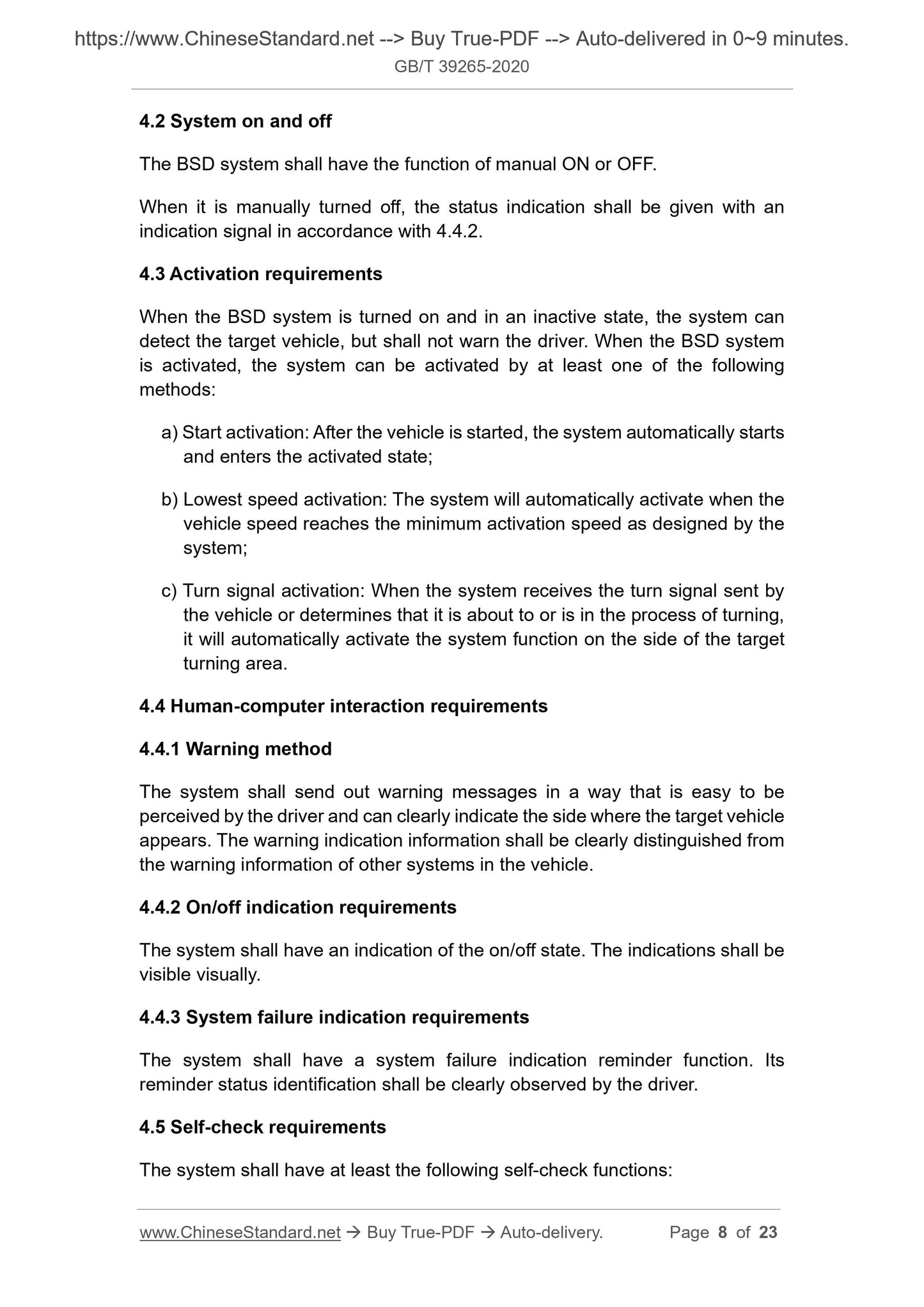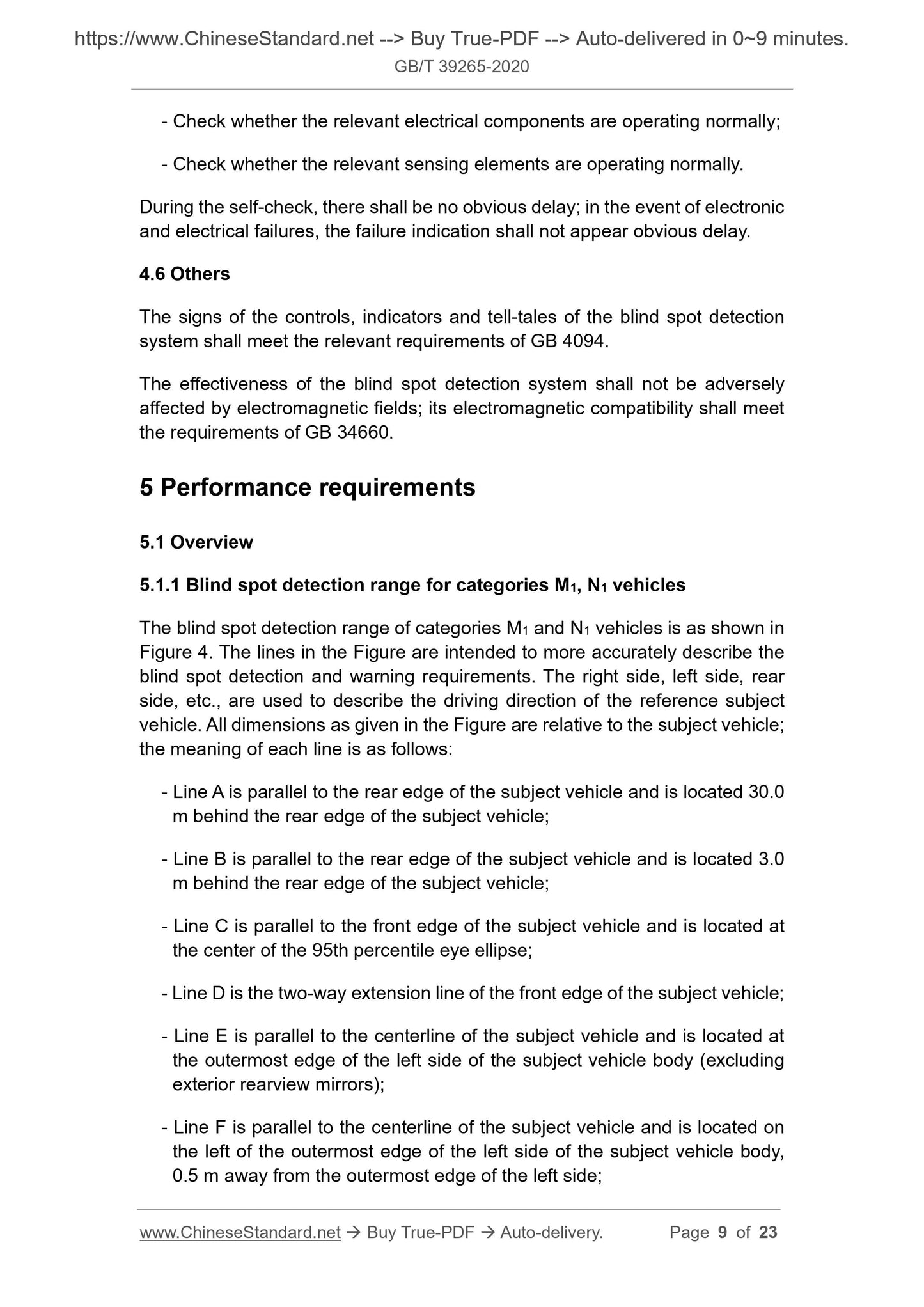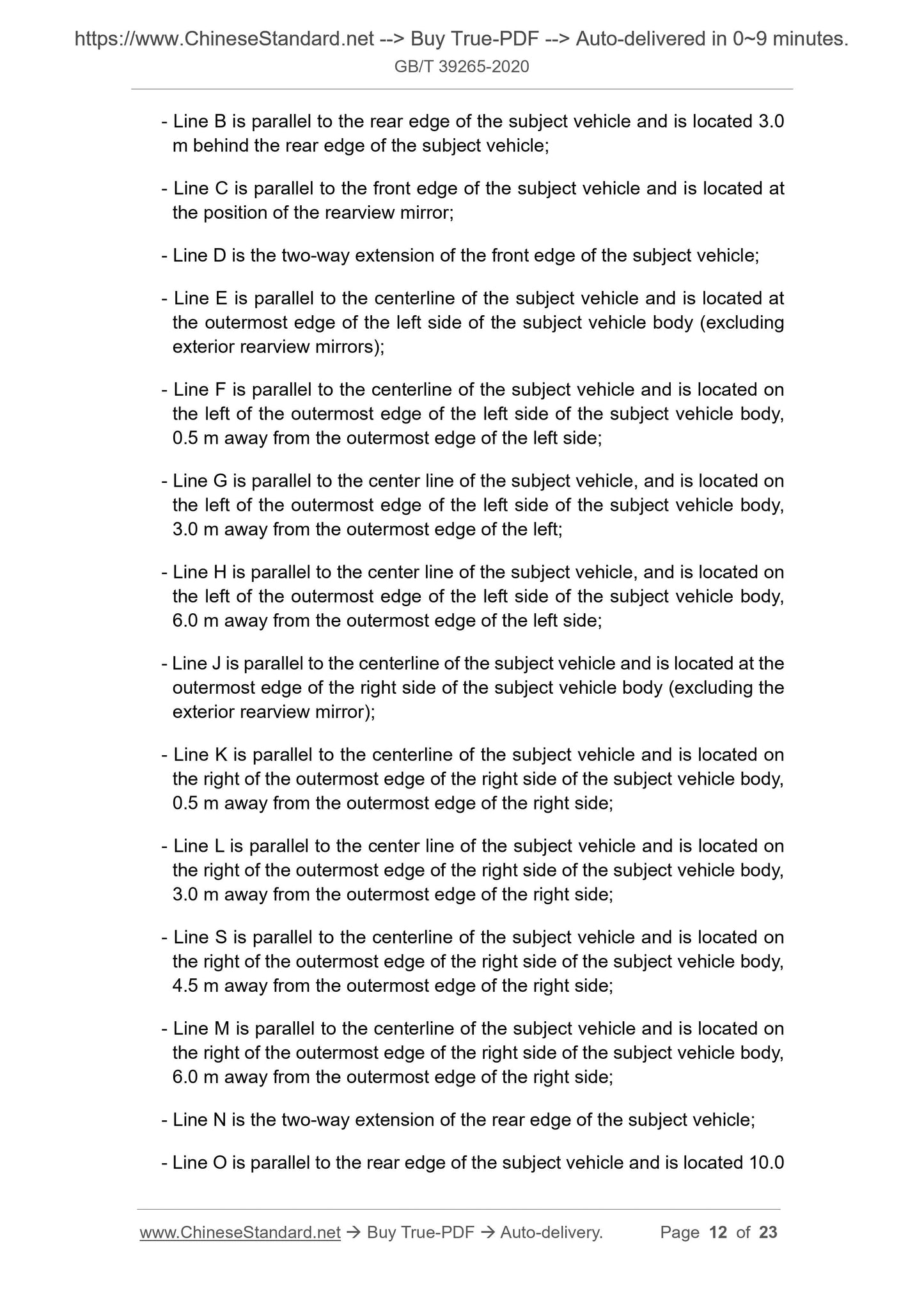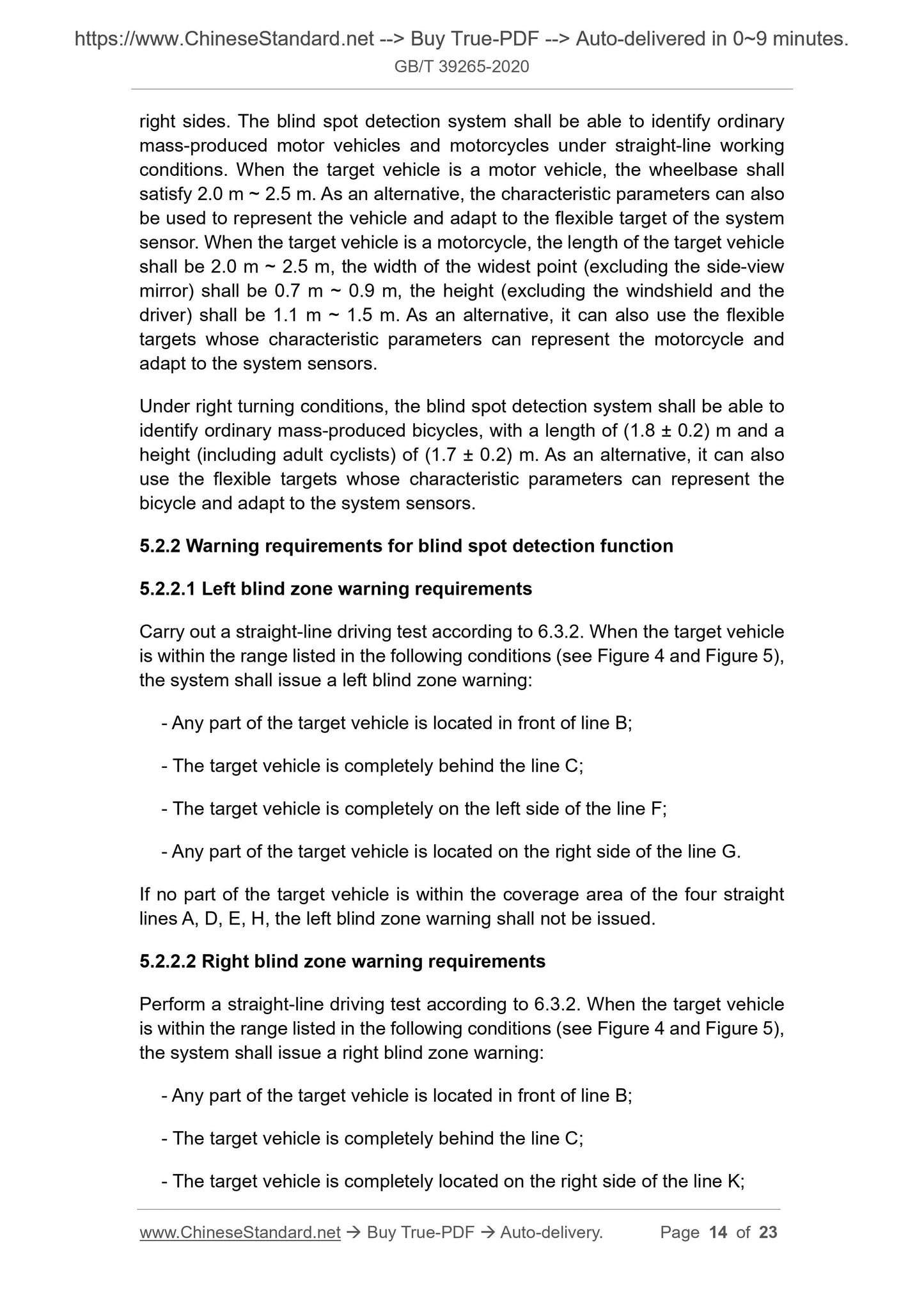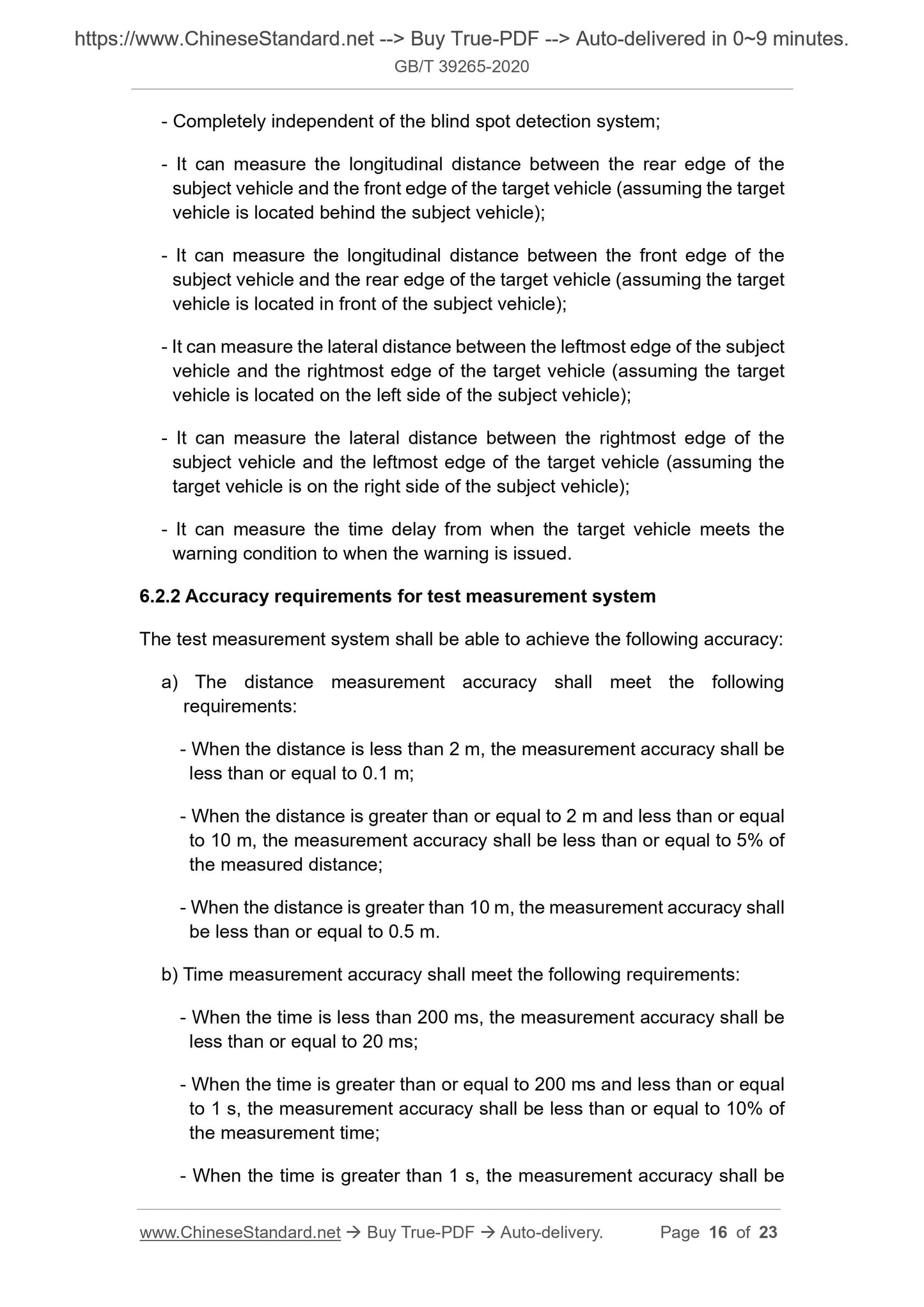1
/
of
8
www.ChineseStandard.us -- Field Test Asia Pte. Ltd.
GB/T 39265-2020 English PDF (GB/T39265-2020)
GB/T 39265-2020 English PDF (GB/T39265-2020)
Regular price
$205.00
Regular price
Sale price
$205.00
Unit price
/
per
Shipping calculated at checkout.
Couldn't load pickup availability
GB/T 39265-2020: Road vehicles - Performance requirements and testing methods for blind spot detection (BSD) system
Delivery: 9 seconds. Download (and Email) true-PDF + Invoice.Get Quotation: Click GB/T 39265-2020 (Self-service in 1-minute)
Newer / historical versions: GB/T 39265-2020
Preview True-PDF
Scope
This standard specifies the general requirements, performance requirementsand test methods of the blind spot detection (BSD) system.
This standard applies to the categories M and N vehicles equipped with blind
spot detection systems.
This standard does not apply to automobile trains, articulated passenger cars
and special operating vehicles.
Basic Data
| Standard ID | GB/T 39265-2020 (GB/T39265-2020) |
| Description (Translated English) | Road vehicles - Performance requirements and testing methods for blind spot detection (BSD) system |
| Sector / Industry | National Standard (Recommended) |
| Classification of Chinese Standard | T41 |
| Classification of International Standard | 43.040 |
| Word Count Estimation | 14,176 |
| Date of Issue | 2020-11-19 |
| Date of Implementation | 2021-06-01 |
| Regulation (derived from) | National Standard Announcement No. 26 of 2020 |
| Issuing agency(ies) | State Administration for Market Regulation, China National Standardization Administration |
Share
